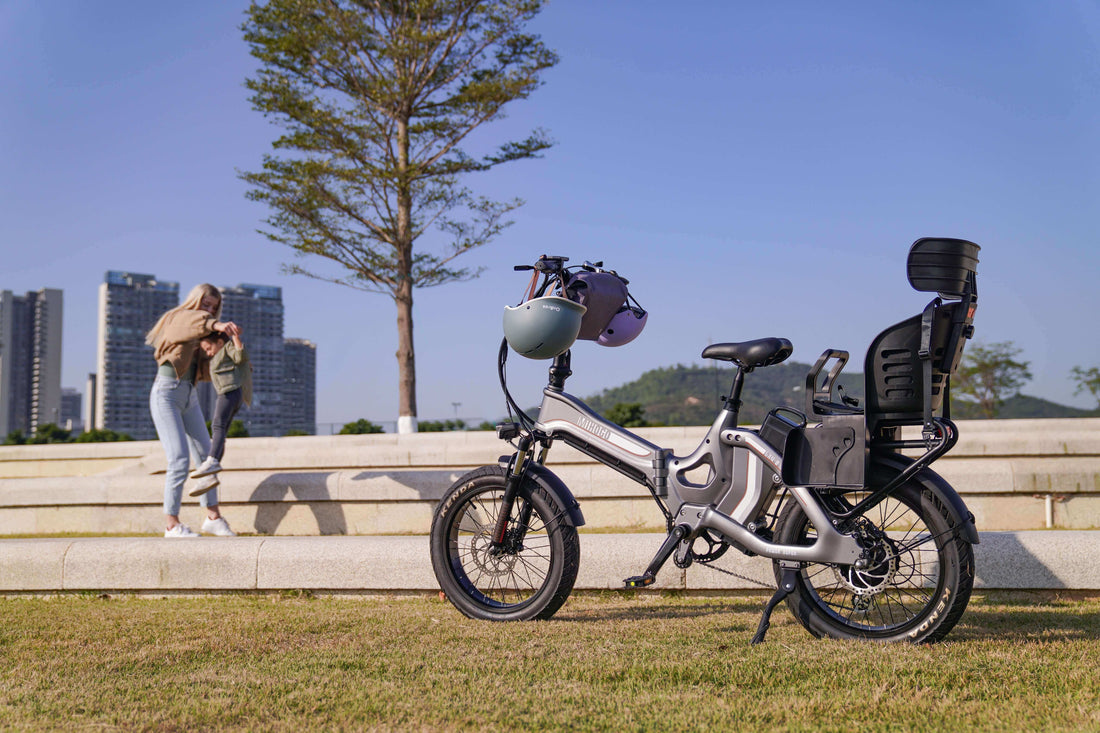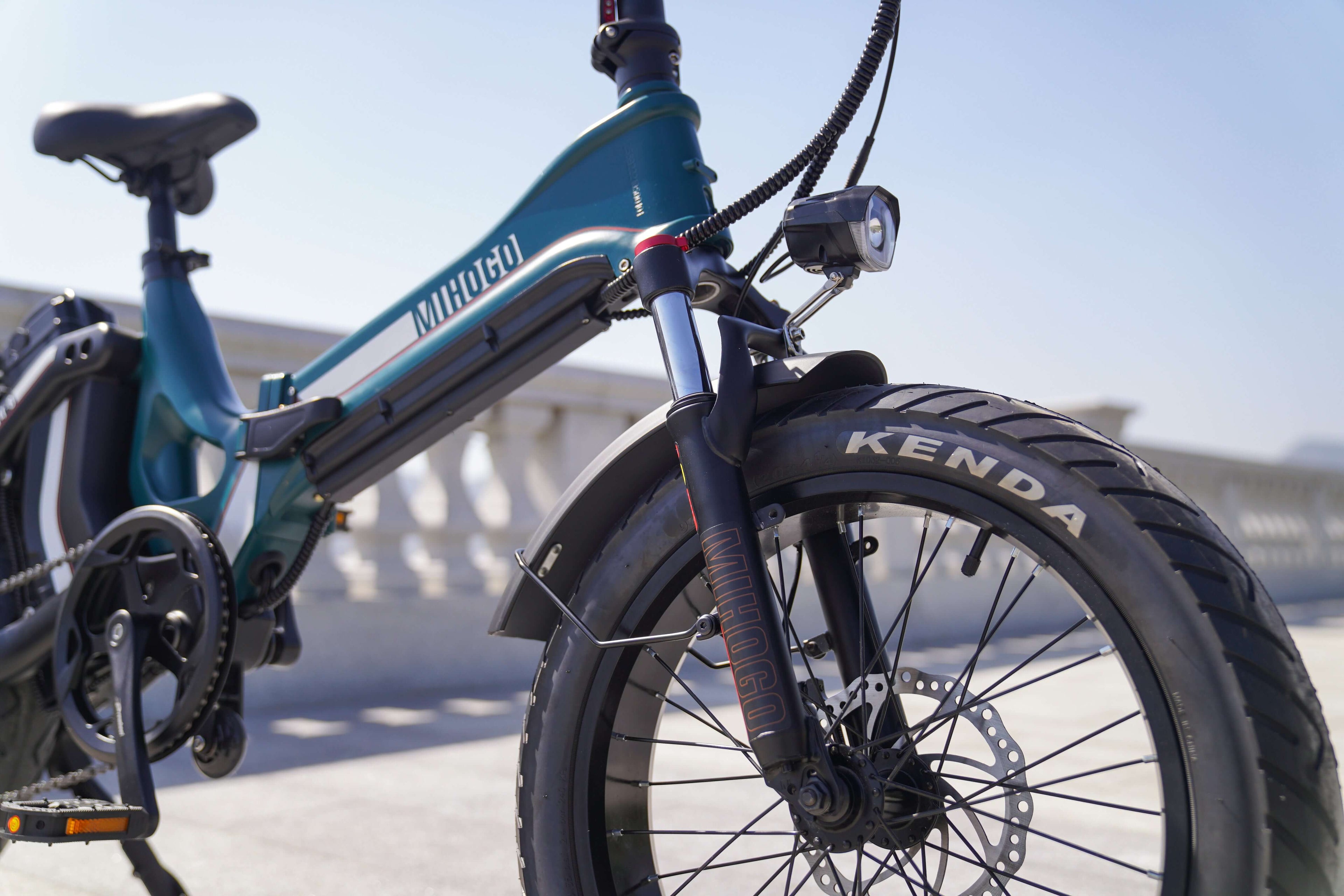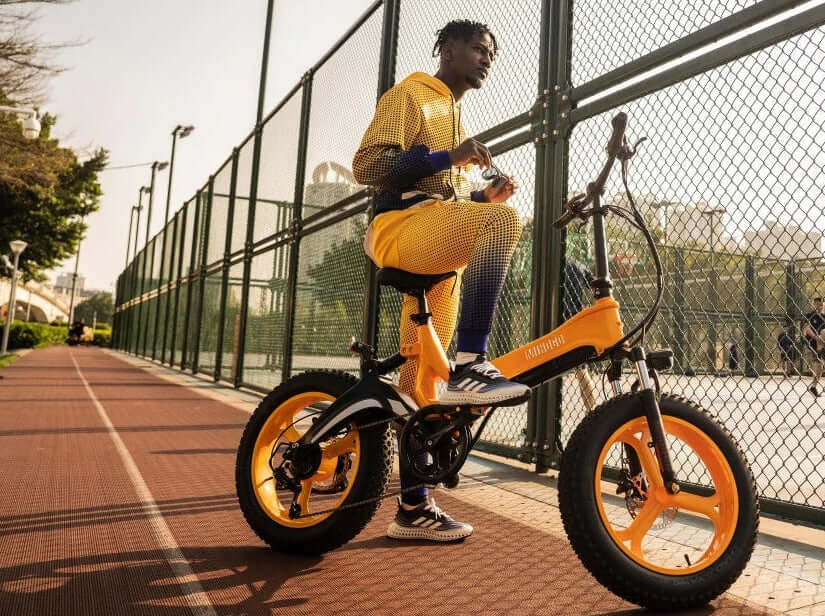Understanding European Winter Challenges for E-bikes
European winters present unique challenges for electric bikes. From the freezing temperatures of Nordic countries reaching -10°C to the wet, humid conditions of Western Europe, the lithium ions in e-bike batteries float in a liquid electrolyte. As the temperature drops, the electrolyte becomes more viscous and solidifies, reducing its conductivity.
Temperature Impact on Your Mihogo Battery
Critical Temperature Thresholds:
- Operating Range: -10°C to +50°C
- Optimal Performance: 10°C to 20°C
- Storage Range: 5°C to 20°C
- Charging Minimum: Never below 5°C
The Mihogo battery technology uses advanced lithium-ion cells identical to Tesla Model X systems, but even these premium batteries require proper winter care to maintain their guaranteed 1000+ cycle life.
Essential Pre-Storage Preparation
1. Thorough Cleaning and Inspection
Before storing your Mihogo e-bike, complete a comprehensive cleaning routine:
Frame and Components:
- Remove all dirt, salt, and debris from winter rides
- Use warm water with two drops of dish detergent (avoid pressure washers)
- Dry thoroughly with clean cloth, paying attention to electronic connections
- Inspect frame for any damage or wear
Drivetrain Maintenance:
- Clean and lubricate the chain with bicycle-specific lubricant
- Rotate pedals to circulate lubricant throughout the system
- Check gear shifting and brake function
- Inspect tires for wear and proper pressure
2. Electronic Component Care
Your Mihogo's sophisticated electronic systems require special attention:
Display and Controls:
- Remove LCD display if detachable (store indoors)
- Clean all electronic contacts
- Check for any corrosion or moisture buildup
- Test all functions before storage
IPX5 Water Resistance Maintenance: All Mihogo e-bikes feature IPX5 water resistance, meaning they're protected against water splashes from any direction. However, winter storage requires additional precautions to maintain this protection level.
Battery Storage: The Critical Component
Optimal Charge Level for Storage
E-bike owners who think it is too cold to ride in winter should ideally store the battery between 10 and 20 degrees Celsius and keep the charge level between 50 and 80 % so that it doesn't fall into deep sleep mode.
Mihogo Battery Storage Protocol:
- Charge Level: Maintain 60-75% charge for optimal storage
- Monthly Check: Inspect charge level monthly, recharge if below 50%
- Temperature: Store between 10-20°C (ideal European indoor temperature)
- Location: Remove from bike and store indoors, away from humidity
Dual Battery Systems (Mihogo ONE)
For the Mihogo ONE's dual battery system with its impressive 128-mile range:
- Store both batteries at same charge level (60-75%)
- Keep batteries together in temperature-controlled environment
- Check both batteries monthly during storage period
- Never store batteries while connected to the bike
Choosing the Right Storage Location
Indoor Storage (Recommended)
Ideal Locations for European Homes:
- Heated Basement: Perfect temperature control, secure
- Utility Room: Easy access, stable temperatures
- Spare Bedroom: Convenient for battery charging/checking
- Insulated Garage: If heated and humidity-controlled
Garage and Shed Storage
If indoor storage isn't possible, optimize your garage or shed:
Temperature Requirements:
- Install thermometer to monitor conditions
- Consider space heater for extreme cold periods
- Ensure temperature stays above 5°C
- Protect from humidity with dehumidifier if necessary
Security Considerations:
- Install proper lighting and security systems
- Use bike covers for dust protection
- Consider bike locks even in secured areas
- Document serial numbers and take photos
Model-Specific Winter Care
Mihogo ONE Utility E-bike
- Dual Battery Care: Remove both batteries for indoor storage
- Carbon Fiber Frame: Wipe down with appropriate cleaner
- 85 Nm Torque Motor: Protect motor connections from moisture
- Accessory Storage: Remove and store separately if applicable
Mihogo Air Max
- Lightweight Design: Can be stored vertically to save space
- Standard Battery: Follow single battery storage protocol
- Urban Components: Clean thoroughly to remove road salt
Mihogo Mini
- Compact Storage: Perfect for apartment living
- Panasonic Battery: Extra attention to charge level maintenance
- Folding Mechanism: Lubricate hinges before storage
Mihogo RX 2.4
- Off-road Components: Deep clean after trail use
- Rugged Construction: Inspect suspension components
- All-terrain Tires: Check tire pressure monthly
European Winter Storage Best Practices
Climate-Specific Considerations
Northern Europe (Scandinavia, Northern UK):
- Temperatures regularly below 0°C
- Extended storage periods (4-5 months)
- Focus on battery warming before spring use
- Consider battery rotation for dual-battery models
Central Europe (Germany, France, Netherlands):
- Moderate temperatures with humidity concerns
- Shorter storage periods (2-3 months)
- Emphasis on moisture control
- Regular mid-winter check-ups recommended
Southern Europe (Spain, Italy, Portugal):
- Milder winters, occasional riding possible
- Focus on humidity control in coastal areas
- Shorter storage periods or intermittent use
- UV protection for outdoor storage
Monthly Maintenance Schedule
Month 1 (December):
- Initial storage setup and battery charge check
- Verify temperature and humidity levels
- Document baseline conditions
Month 2 (January):
- Battery charge assessment and top-up if needed
- Check for any moisture accumulation
- Inspect tire pressure
Month 3 (February):
- Mid-winter comprehensive check
- Battery health evaluation
- Plan for spring preparation
Month 4+ (March onwards):
- Prepare for spring riding season
- Professional tune-up consideration
- Test all systems before first ride
Spring Preparation and Re-activation
Pre-Season Checklist
Battery Reactivation:
- Allow batteries to reach room temperature (2+ hours)
- Perform full charge cycle before first ride
- Test battery connections and display functions
- Check for any winter-related battery degradation
Mechanical Inspection:
- Professional tune-up recommended
- Brake system check and adjustment
- Gear shifting calibration
- Tire inspection and replacement if needed
Safety Verification:
- Test all electronic systems
- Verify lights and safety features
- Check frame integrity
- Lubricate all moving parts
Professional Maintenance
Consider professional spring maintenance for:
- Brake System: Hydraulic brake bleeding and adjustment
- Electrical Systems: Comprehensive diagnostic check
- Drive Train: Complete overhaul and adjustment
- Battery Health: Capacity testing and cell balancing
Winter Riding vs. Storage Decision
When to Store Your Mihogo
Store if:
- Temperatures consistently below 0°C
- Limited safe riding conditions (ice, heavy snow)
- Lack of proper winter gear
- Concerns about salt damage to components
Continue Riding if:
- Temperatures above 5°C regularly
- Proper winter gear available
- Safe, maintained bike paths
- Willingness to perform enhanced maintenance
Winter Riding Modifications
For continued winter use of your Mihogo:
- Battery Management: Keep battery warm, charge indoors
- Enhanced Lighting: Additional visibility equipment
- Protective Gear: Fenders and frame protection
- Tire Considerations: Winter-specific tires for improved traction
Cost-Effective Storage Solutions
DIY Storage Enhancement
Budget-Friendly Options (€20-50):
- Bike covers for dust protection
- Basic moisture absorbers
- Simple temperature monitoring
- DIY maintenance tools
Mid-Range Solutions (€50-150):
- Dehumidifiers for storage areas
- Professional bike stands
- Quality bike covers with ventilation
- Comprehensive maintenance kits
Premium Protection (€150+):
- Climate-controlled storage solutions
- Professional battery storage systems
- Security enhancement equipment
- Professional maintenance contracts
Common Winter Storage Mistakes to Avoid
Battery Care Errors
- Never store at 0% charge (may become unrecoverable)
- Avoid storing on charger (can damage battery management system)
- Don't ignore monthly checks (deep discharge can occur)
- Never charge cold batteries (wait for room temperature)
Storage Environment Issues
- High humidity locations (causes corrosion)
- Temperature fluctuations (condensation problems)
- Direct sunlight exposure (UV damage and overheating)
- Unsecured locations (theft and damage risk)
Environmental Impact and Sustainability
Proper winter storage extends your Mihogo's lifespan, contributing to environmental sustainability. Sustainable transportation includes maximizing the useful life of electric vehicles through proper maintenance and care.
Sustainability Benefits:
- Extended battery life reduces electronic waste
- Proper maintenance prevents premature replacement
- Year-round usability reduces car dependency
- Professional maintenance supports local cycling economy
Insurance and Documentation
Winter Storage Documentation
- Photo Documentation: Take photos before storage
- Condition Reports: Document any existing wear or damage
- Battery Health Records: Track charge cycles and capacity
- Maintenance Logs: Keep detailed service records
Insurance Considerations
- Storage Coverage: Verify insurance covers stored e-bikes
- Security Requirements: Meet insurer security standards
- Value Documentation: Update values for newer models
- Theft Protection: Enhance security as required
Conclusion: Protecting Your Mihogo Investment
Proper winter storage is essential for maintaining your Mihogo e-bike's performance, safety, and longevity. With European temperatures regularly dropping below optimal battery operating conditions, following these comprehensive storage guidelines ensures your electric bike emerges from winter storage in peak condition.
Key Takeaways:
- Temperature Control: Maintain 10-20°C storage environment
- Battery Care: 60-75% charge level, monthly monitoring
- Professional Support: Consider spring tune-ups for optimal performance
- Model-Specific Needs: Follow guidelines specific to your Mihogo model
By implementing these winter storage and care practices, you're not just protecting a valuable investment—you're ensuring countless miles of future European cycling adventures. Your Mihogo's advanced technology and robust construction, combined with proper winter care, guarantee reliable performance season after season.






